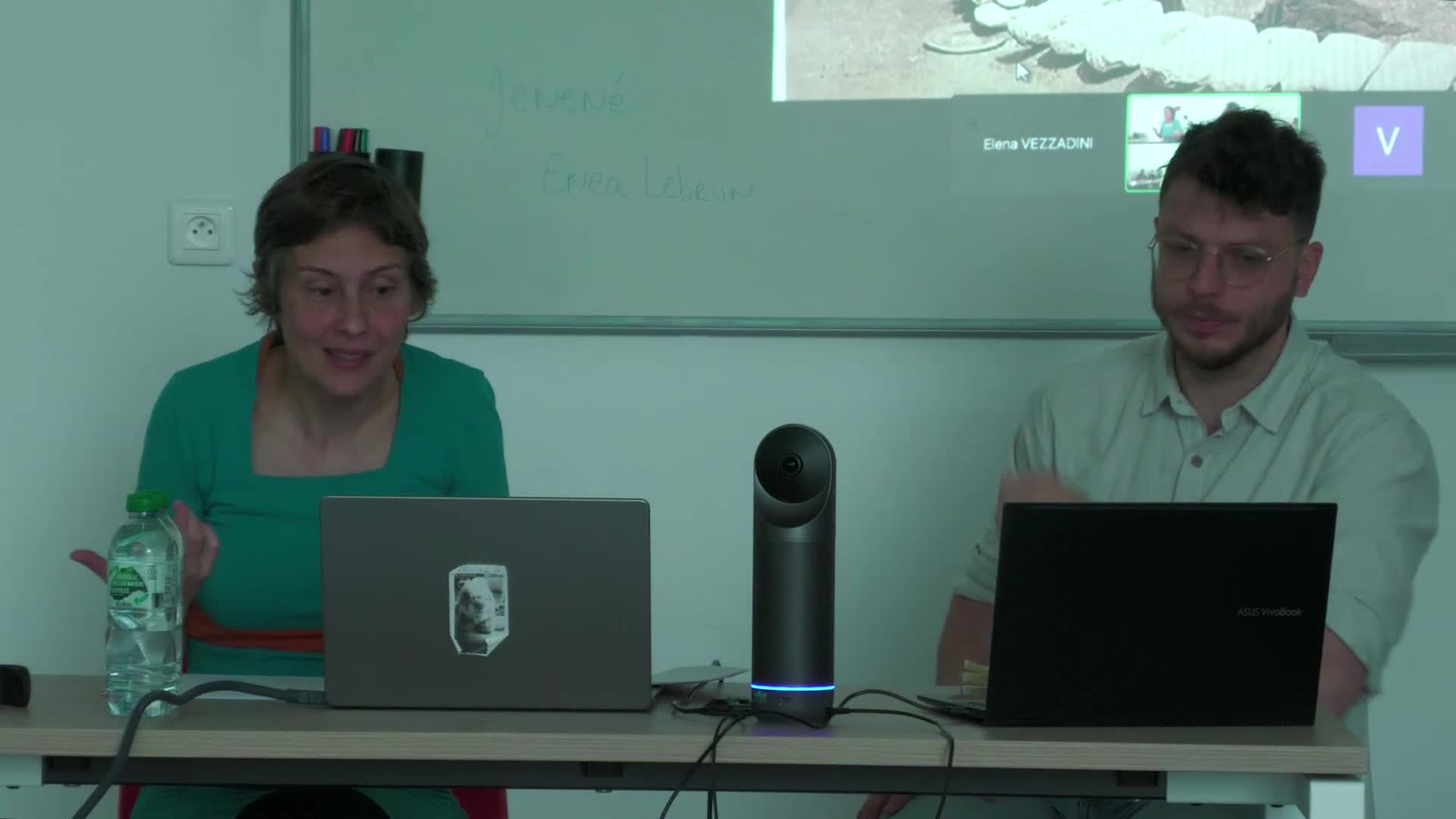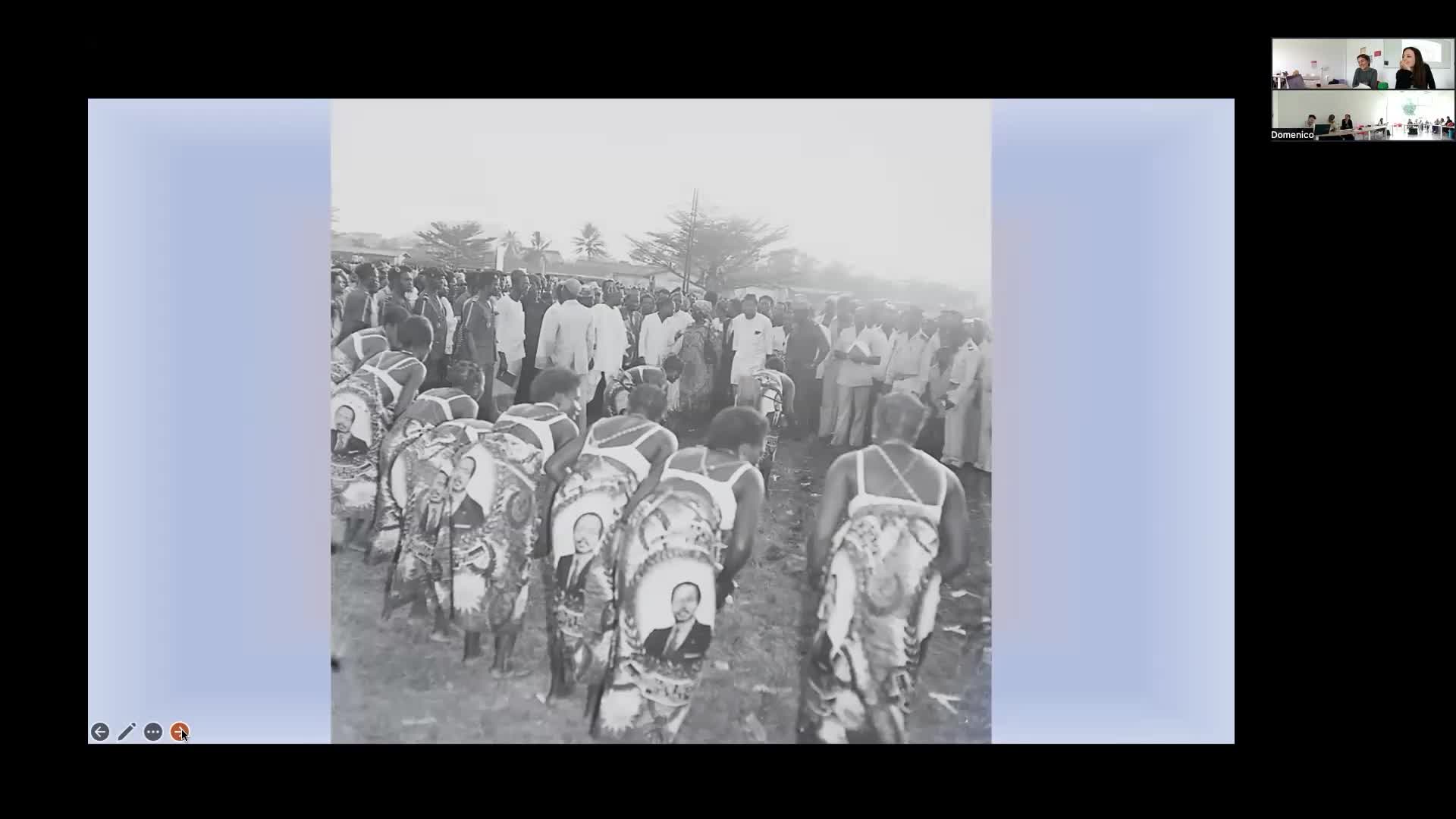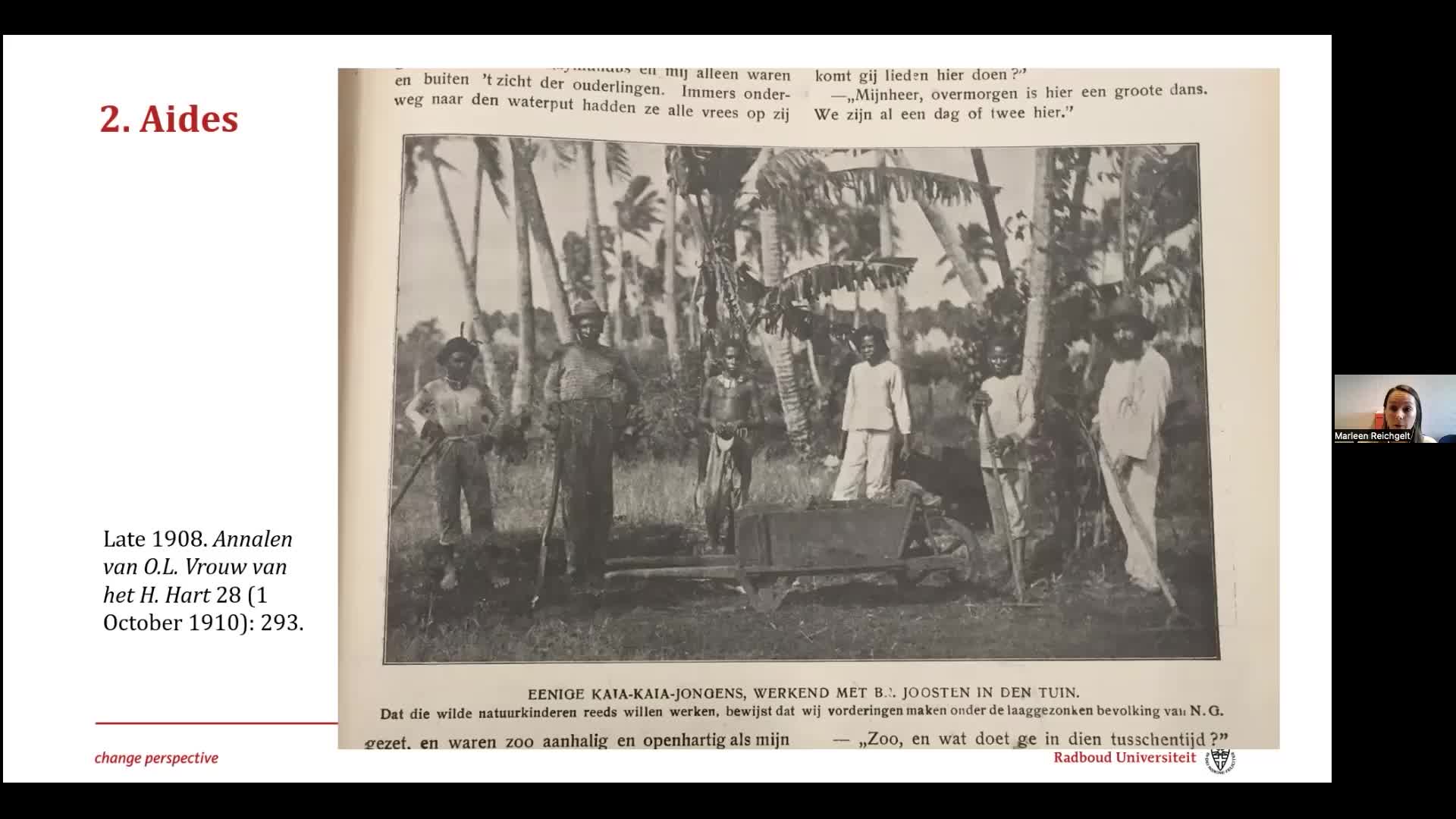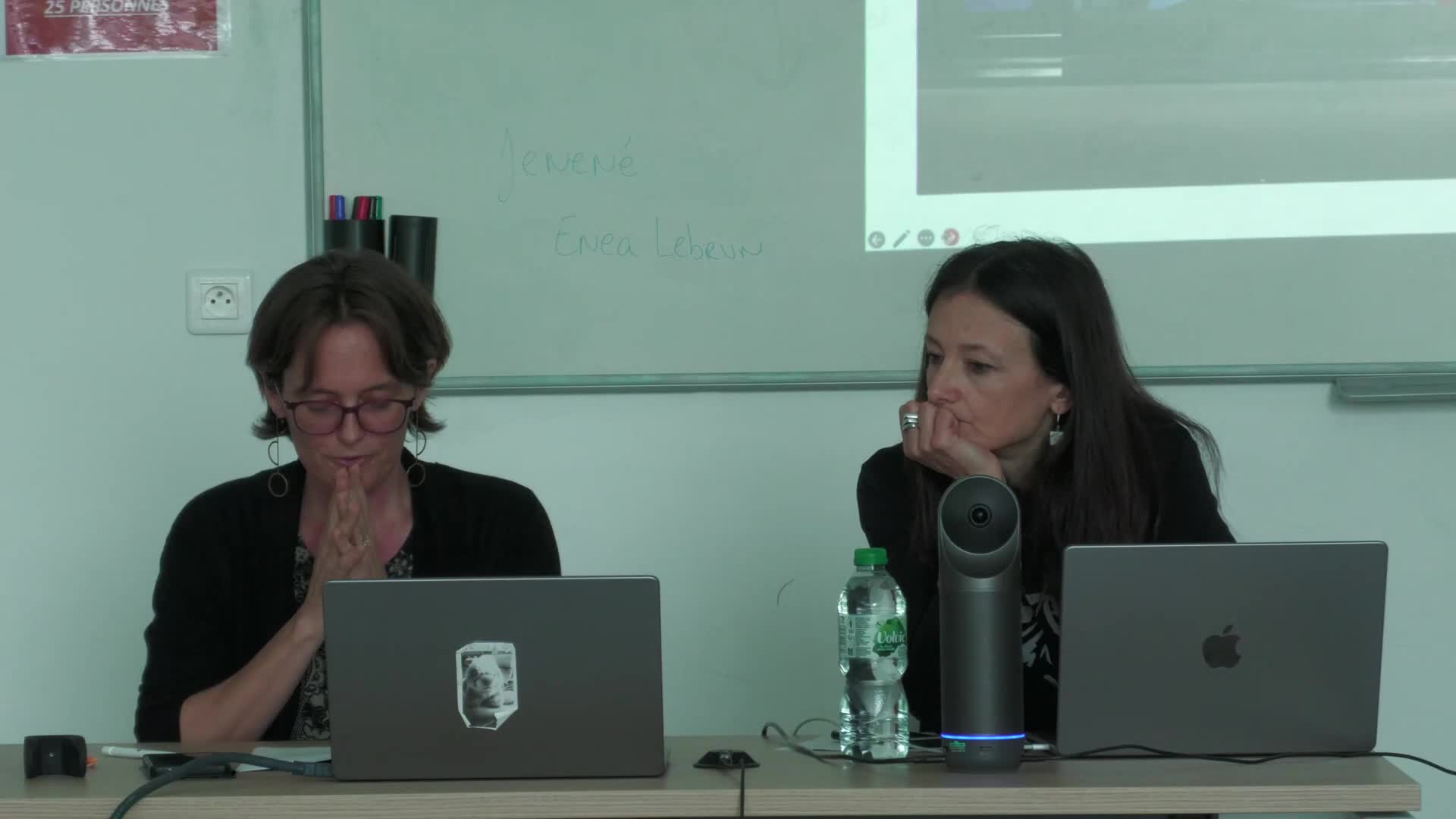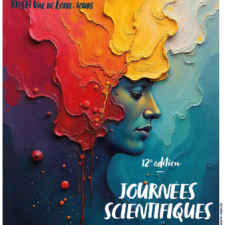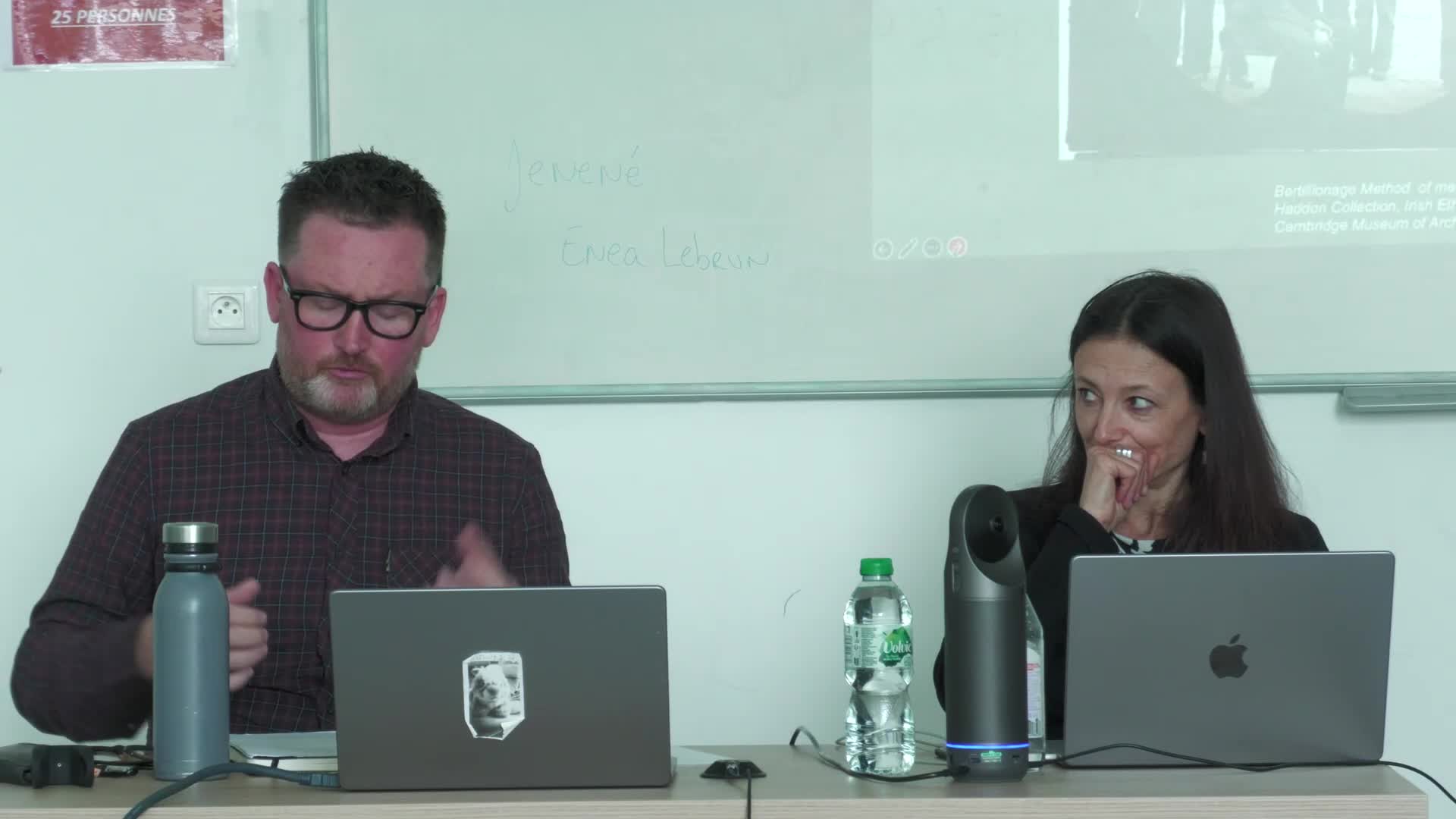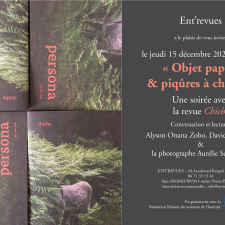Notice
Photography and Agency: the German-Cameroonian Colonial History Through the Visual Sources
- document 1 document 2 document 3
- niveau 1 niveau 2 niveau 3
Descriptif
The history of colonialism and photography is closely linked to the industrial and imperialist expansion of Europe in the 19th and 20th centuries. The establishment of colonial rule over the African continent and the spread of photography as a means of documenting and transmitting images of distant regions began at the end of the nineteenth century. Colonial photography belongs to an incalculable number of images produced on the African continent during the era of the European presence, and which somehow found their way to Europe. Like its European neighbours, France, England and Belgium, the German colonial empire and its protagonists have left an indelible mark on the history of the photographic collections of German institutions. This intervention focuses on the vast archive of colonial photographs, those showing Cameroon, a colony under German rule between 1884 and 1919. By focusing on the photographs taken during the expeditions, I will show that they constitute sources and visual traces of German colonial history in Cameroon. Initially, I will look at imperial biographies, the direct links between agents and photographic collections for the benefit of the colonial empire, and the receptions they received. I will then address the question of the mutation of colonial objects, in this case photography, and its local agency. My analyses will be based not only on the theoretical postulates of the “biographical turn,” but also on the work of the British historian of photography Elizabeth Edwards, who studies the intersections between photography and history. To this end, we are no longer simply interested in the conception of
photographs as historical sources, which has long dominated the historical sciences, but rather in what “photographs do to history.”
Intervention / Responsable scientifique
Dans la même collection
-
Introduction: Uncovering the History of Women from Photo Archives: the Examples of the Colonial Arc…
VezzadiniElenaCristofaroDomenicoIntroduction: Uncovering the History of Women from Photo Archives: the Examples of the Colonial Archives of Ghana and Sudan
-
Writing History - histories in the Age of Photography
SchneiderJürgWriting History - histories in the Age of Photography
-
Zooming In: Children as Guides and Informants in Merauke, West Papua (Colonial Netherlands New Guin…
ReichgeltMarleenPhotography as a source for social history
-
Capturing by Photography the Social Relations at Work : Example from Researches in Ethiopia and Bur…
Perrin-JolyConstanceCapturing by Photography the Social Relations at Work: Example from Researches in Ethiopia and Burkina Faso
Sur le même thème
-
Après Soi 16-18 Écrire pour ses enfants ou comment transmettre la réputation familiale (XVI-XVIIIe)…
DeprettoLaureCe projet interdisciplinaire qui s’inscrit dans l’axe « Transmission(s), transfert(s), réappropriation(s) » de la MSH Val de Loire entend faire dialoguer historiens et littéraires sur les écrits
-
Capturing by Photography the Social Relations at Work : Example from Researches in Ethiopia and Bur…
Perrin-JolyConstanceCapturing by Photography the Social Relations at Work: Example from Researches in Ethiopia and Burkina Faso
-
Zooming In: Children as Guides and Informants in Merauke, West Papua (Colonial Netherlands New Guin…
ReichgeltMarleenPhotography as a source for social history
-
Racializing Photography: Reflecting on the Constellations of Photography, History and Race
CarvilleJustinRacializing Photography: Reflecting on the Constellations of Photography, History and Race
-
Introduction: Uncovering the History of Women from Photo Archives: the Examples of the Colonial Arc…
VezzadiniElenaCristofaroDomenicoIntroduction: Uncovering the History of Women from Photo Archives: the Examples of the Colonial Archives of Ghana and Sudan
-
Writing History - histories in the Age of Photography
SchneiderJürgWriting History - histories in the Age of Photography
-
Conquête spatiale et arts visuels : faire corps à corps avec le réel grâce au récit spéculatif
SophieDevauxSophie Devaux a saisi par l‘objectif les vestiges d’une aventure spatiale liée à la Guerre Froide comme un champ de ruines.
-
L’Albanie communiste vue à travers la production photographique
RapperGilles deDès 1945, le régime communiste qui se met en place en Albanie s’intéresse à la photographie en rassemblant et en diffusant les photos des combats mené par les résistants albanais contre les forces d
-
ENT'REVUES : « Objet papier et piqûres à cheval »
Onana ZoboAlysonBonnandDavidScouarnecAurélieEnt’revues vous invite à une soirée avec la revue Chiche. Conversations et lectures autour du numéro « Persona ».
-
Une architecture institutionnelle à l’épreuve des politiques de production de frontières : formati…
BourmaudPhilippePalestiniens et Israéliens deux décennies après Oslo : anatomie, vécus et mouvements d'une séparation Colloque du 17, 18 et 19 Février 2011, Maison méditerranéenne des sciences de l'homme, Aix-en
-
Un système au bord de la crise : les effets spatiaux de la désagrégation territoriale et la structu…
BourmaudPhilippeColloque international : 12, 13 et 14 novembre 2009, Maison méditerranéenne des sciences de l'homme, Aix-en-Provence Organisé par Stéphanie Latte Abdallah (IREMAM) et Cédric Parizot (CRFJ, IREMAM),
-
Le royaume de Naples et des Deux-Siciles (1815-1850)
DelpuPierre-MariePierre Marie DELPU évoque un "autre risorgimento" libéral, précurseur de l'Unité italienne, qui s'est forgé dans l'opposition aux Bourbons et dans l'émergence d'un sentiment national.


